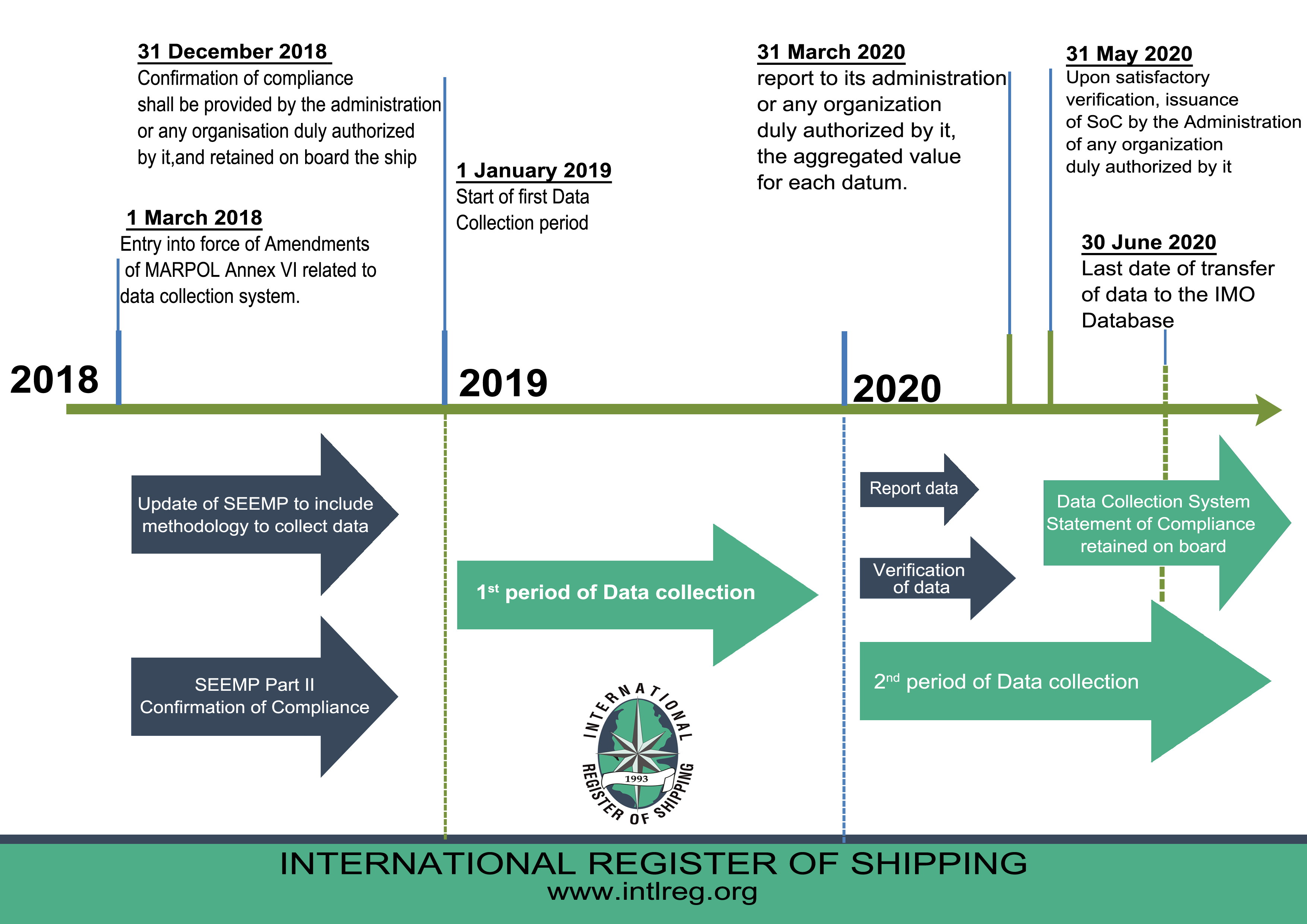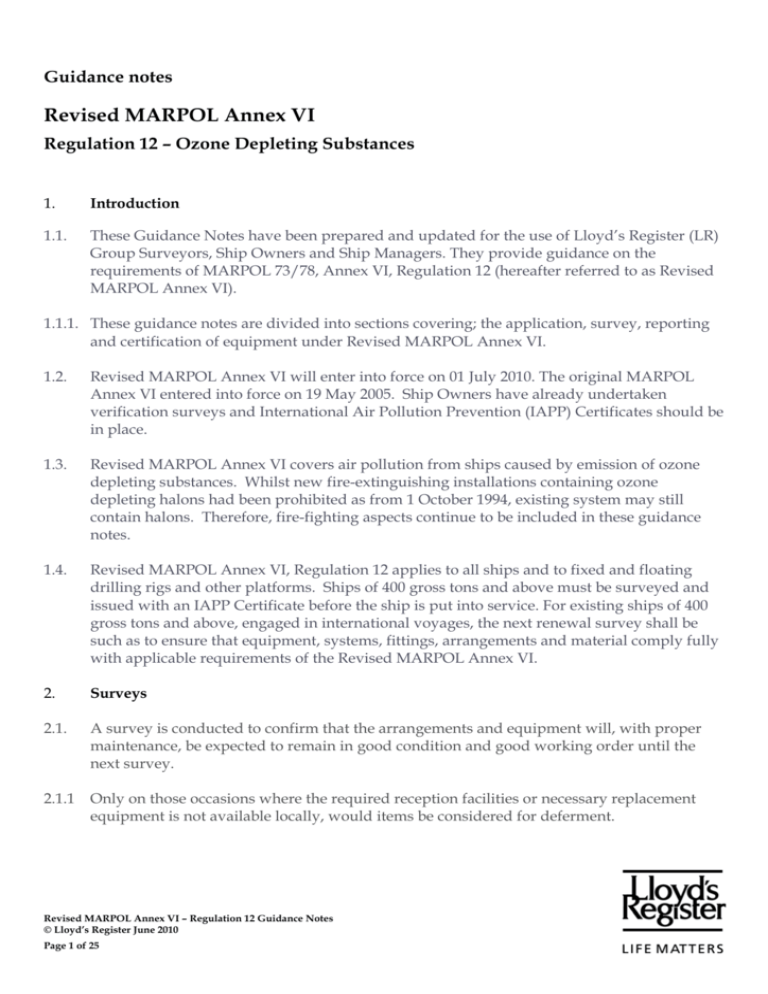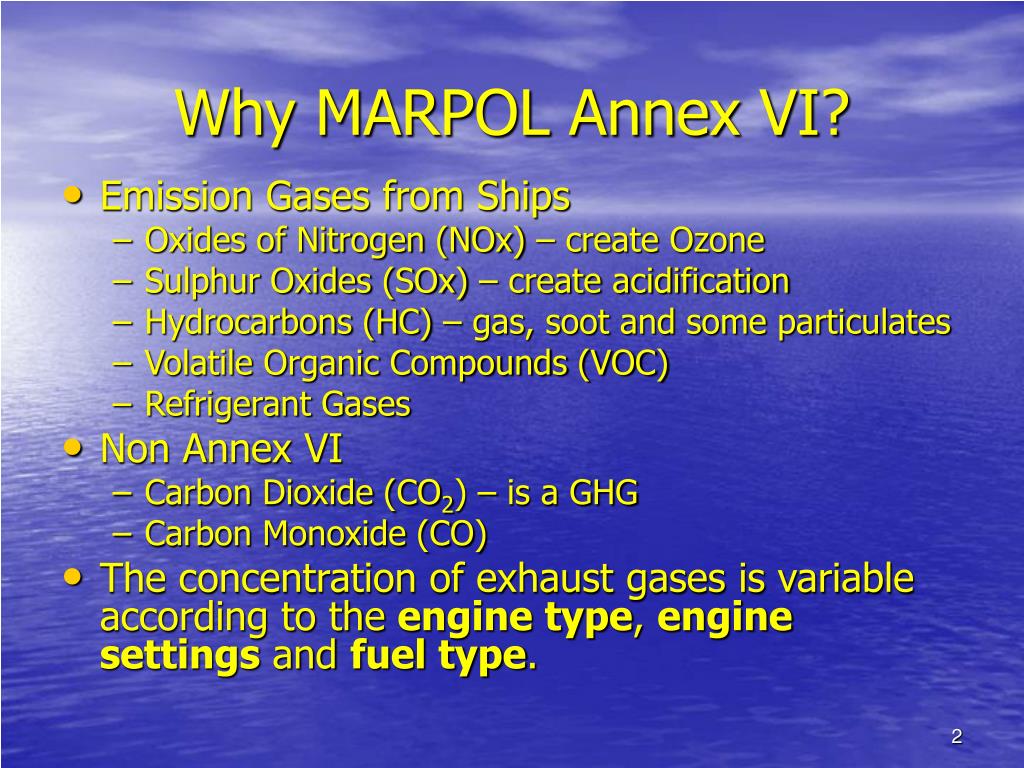Marpol Annex Vi Regulation 14.10
MARPOL Annex VI Regulation 14.10: A Comprehensive Guide
Welcome to our in-depth guide on MARPOL Annex VI Regulation 14.10. In this article, we will dive into the details of this regulation and explore its significance in marine engineering. Whether you are a student, professional, or simply interested in maritime regulations, this post will provide you with valuable insights. So, let's get started!
Understanding MARPOL Annex VI Regulation 14.10

MARPOL Annex VI Regulation 14.10 is a vital component of the MARPOL (International Convention for the Prevention of Pollution from Ships) treaty. This regulation focuses on the prevention and control of emissions from ships, aiming to minimize air pollution caused by vessels. It specifically addresses the limitations on sulfur content of fuel oils used onboard.
Impact of MARPOL Annex VI Regulation 14.10 on Marine Engineering

MARPOL Annex VI Regulation 14.10 plays a crucial role in shaping the maritime industry and influences various aspects of marine engineering. Let's explore its impact:
1. Technological Advancement in Exhaust Gas Cleaning Systems
Shipowners and operators are required to comply with the sulfur content limits by either using low-sulfur fuel oils or adopting alternative approaches such as Exhaust Gas Cleaning Systems, commonly known as scrubbers. These systems enable vessels to reduce their sulfur emissions significantly.
2. Increased Demand for LNG-Powered Vessels
Given the stringent sulfur content requirements, an increasing number of vessels are being designed and constructed to operate on liquefied natural gas (LNG). LNG-powered ships provide a cleaner alternative, as they emit significantly lower levels of sulfur and other harmful pollutants.
3. Development of Sustainable Fuel Alternatives
MARPOL Annex VI Regulation 14.10 has stimulated research and development efforts in the marine industry to explore sustainable fuel alternatives. This includes the development of biofuels, hydrogen-based fuels, and other innovative solutions that can help reduce the environmental impact of shipping.
FAQs about MARPOL Annex VI Regulation 14.10
Q1: What is the purpose of MARPOL Annex VI Regulation 14.10?
A1: The main objective of this regulation is to reduce air pollution caused by ships by setting limits on the sulfur content of fuel oils used onboard.
Q2: What are the sulfur content limits specified by MARPOL Annex VI Regulation 14.10?
A2: According to this regulation, the sulfur content in fuel oils used onboard ships must not exceed 0.50% m/m (mass by mass) globally, unless the vessel is equipped with an Exhaust Gas Cleaning System or using an alternative fuel with lower sulfur content.
Q3: How is MARPOL Annex VI Regulation 14.10 enforced?
A3: Compliance with MARPOL Annex VI Regulation 14.10 is achieved through various measures, including regular inspections by port state authorities, the issuance of International Air Pollution Prevention (IAPP) certificates, and the use of advanced fuel monitoring systems.
In Summary
MARPOL Annex VI Regulation 14.10 is a critical component of the MARPOL treaty, playing a pivotal role in reducing air pollution from ships. This regulation has driven technological advancements in exhaust gas cleaning systems, fostered the adoption of LNG-powered vessels, and encouraged the development of sustainable fuel alternatives. By effectively implementing and adhering to this regulation, the marine engineering industry can contribute significantly to environmental protection and sustainable shipping practices.
Disclaimer: This article is for informational purposes only and does not constitute legal advice. Please refer to the official MARPOL regulations and consult with appropriate authorities for comprehensive guidance.
MARPOL ANNEX VI
 Image Source : www.meoexamz.co.in
Image Source : www.meoexamz.co.in marpol annex
DEADLINE FOR IMO DCS BY 31 MAY 2020 – STATEMENT OF COMPLIANCE SHALL BE
 Image Source : intlreg.org
Image Source : intlreg.org imo dcs timeline issued shall board deadline compliance statement regulations
Revised MARPOL Annex VI
 Image Source : studylib.net
Image Source : studylib.net Marpol Annex 1 - Regulation 1 - Definitions | PDF | Ships | Oil Tanker
 Image Source : www.scribd.com
Image Source : www.scribd.com marpol annex definitions
Download Wallem Marpol Compliance Program - Jdlasopa
 Image Source : jdlasopa447.weebly.com
Image Source : jdlasopa447.weebly.com Implementation Of MARPOL ANNEX VI Regulation VI/13.7
 Image Source : www.yumpu.com
Image Source : www.yumpu.com MARPOL REGULATION Annex–I – Marine Engineering Study Material
 Image Source : marineengineeringstudymaterial.wordpress.com
Image Source : marineengineeringstudymaterial.wordpress.com marpol annex regulation
MARPOL ANNEX 4 Explained: How To Prevent Pollution From Sewage At Sea
 Image Source : in.pinterest.com
Image Source : in.pinterest.com marpol sewage annex discharge marine marineinsight insight dimaksud
Deadline for imo dcs by 31 may 2020 – statement of compliance shall be. Implementation of marpol annex vi regulation vi/13.7. Marpol sewage annex discharge marine marineinsight insight dimaksud. Marpol annex 4 explained: how to prevent pollution from sewage at sea. Marpol annex regulation